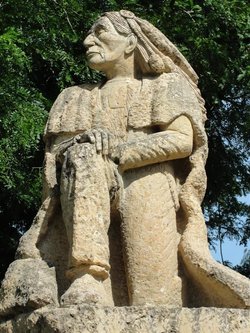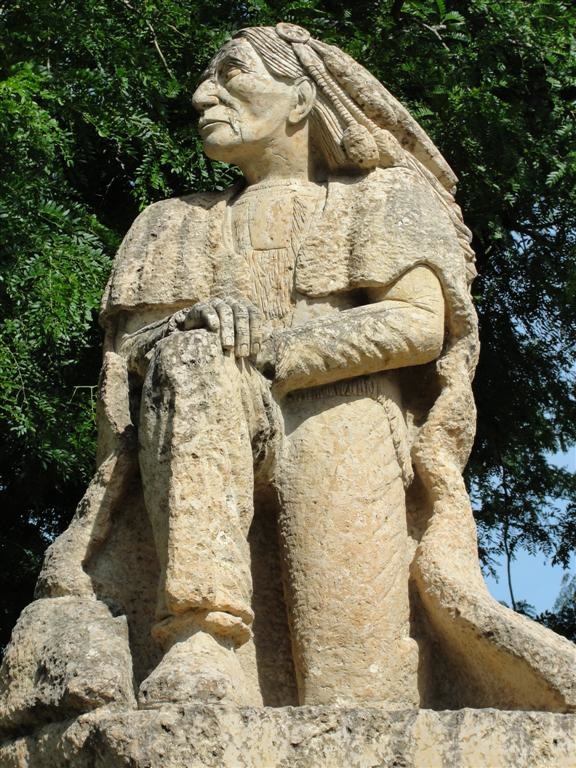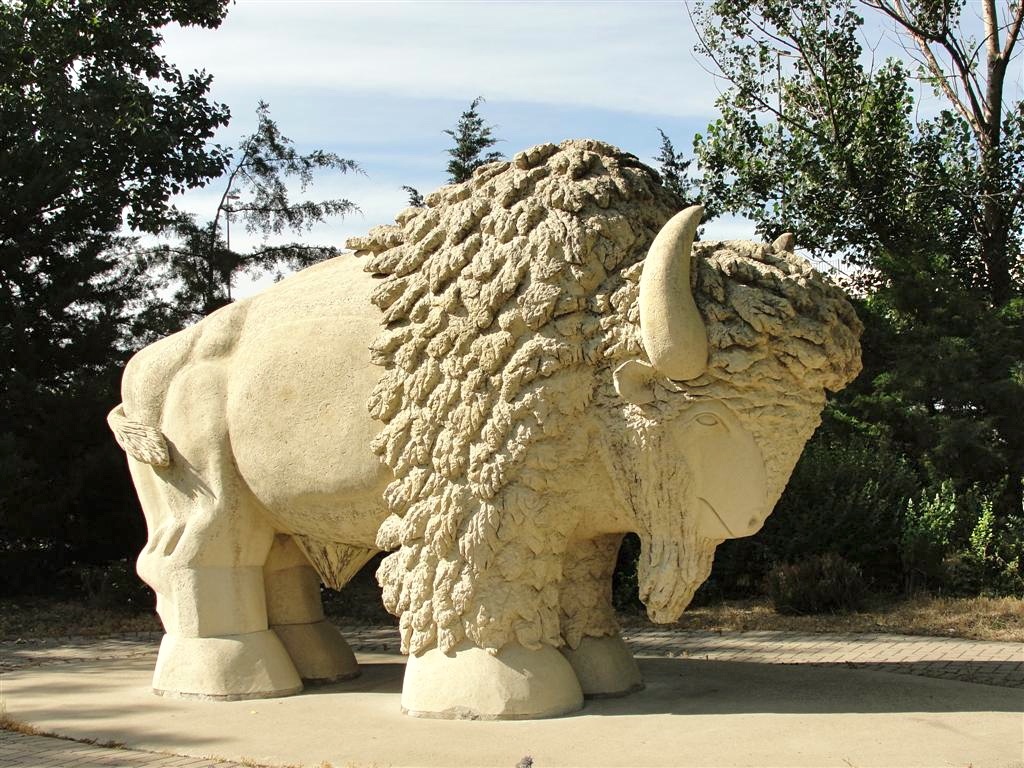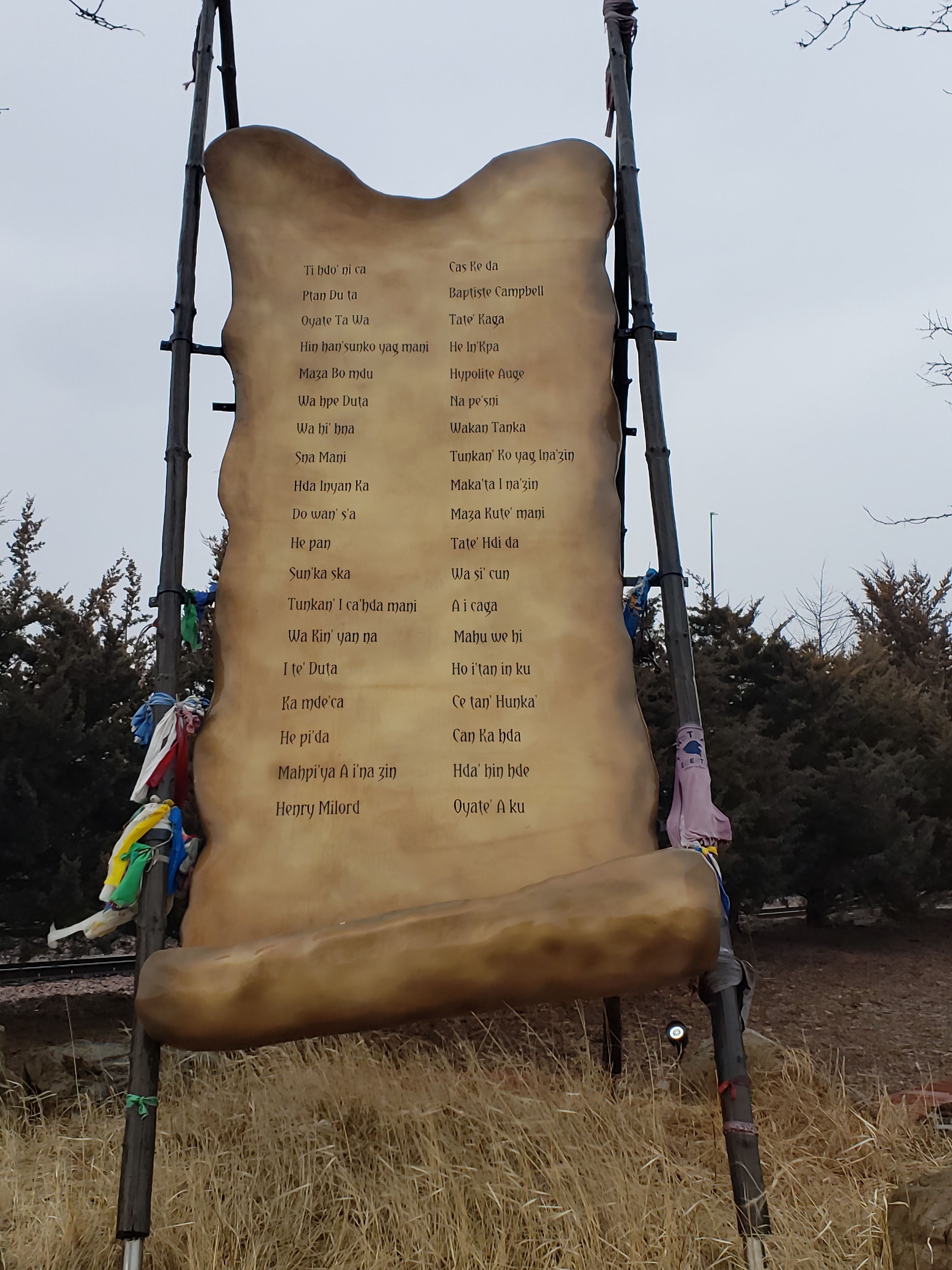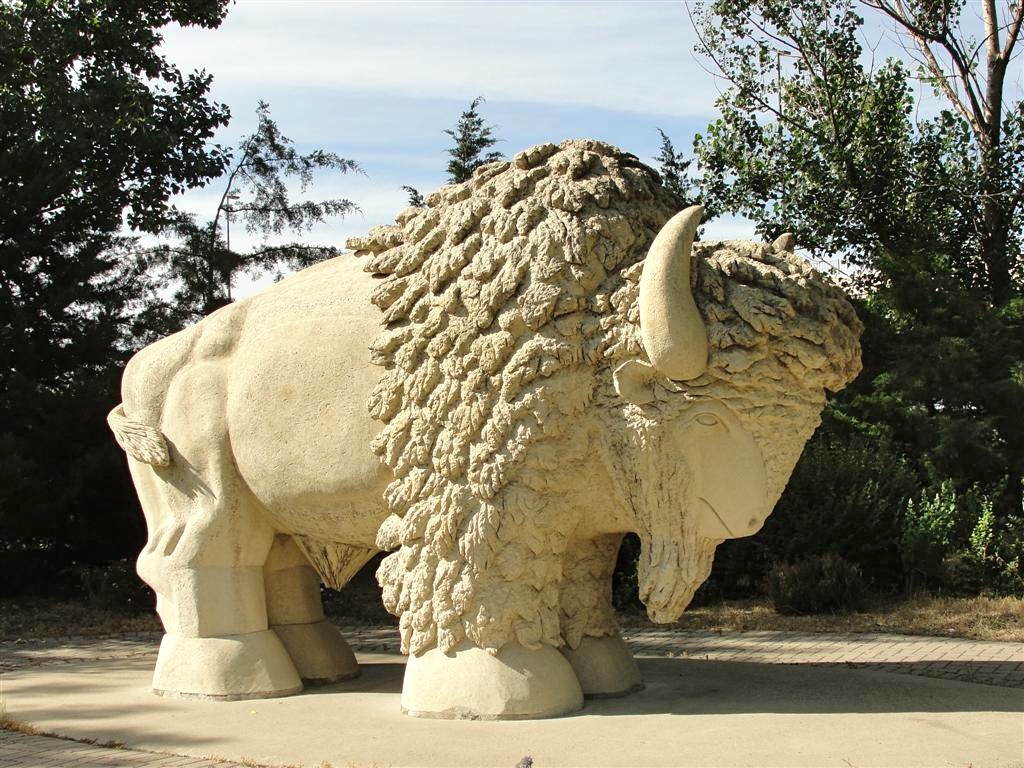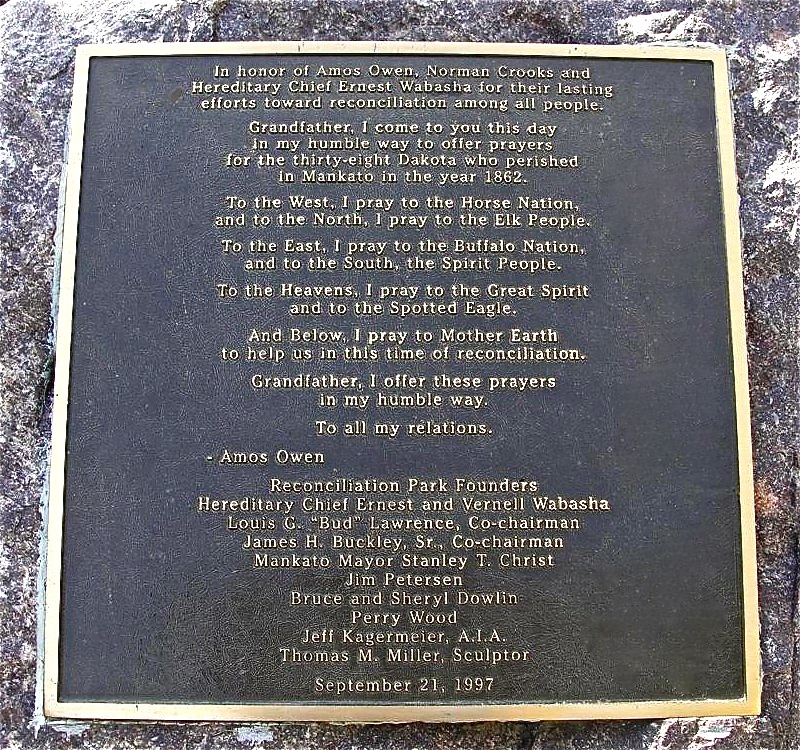He was one of 303 Sioux who were tried by a military commission and convicted for killings committed in warfare. President Abraham Lincoln reviewed each of the cases and commuted the death sentences of all but 38, one of whom was Hdainyanka.
Shortly before he was executed, he wrote the following letter to his father-in-law, Chief Wabasha:
You have deceived me. You told me that if we followed the advice of General Sibley, and gave ourselves up to the whites, all would be well; no innocent man would be injured. I have not killed, wounded or injured a white man, or any white persons. I have not participated in the plunder of their property; and yet to-day I am set apart for execution, and must die in a few days, while men who are guilty will remain in prison. My wife is your daughter, my children are your grandchildren. I leave them all in your care and under your protection. Do not let them suffer; and when my children are grown up, let them know that their father died because he followed the advice of his chief, and without having the blood of a white man to answer for to the Great Spirit.
Sources:
Isch, John. The Dakota Trials, Including the Complete Transcripts and Explanatory Notes on the Military Commission Trials in Minnesota, 1862 - 1864, p. 62-63.
Whiting and Ruggles Report, Case No. 19. Rda-in-yan-kua. Took a prominent part in all the battles, including an attack on New-Ulm, leading and urging the Indians forward, and opposing the giving up of the captives when it was proposed by others.∼Mdewakanton Dakota warrior who fought in the US-Dakota War of 1862. Alternate names and spellings and meanings of his name include Mahpiya cokaya "In middle or amidst clouds", Marpiya cokaya mani "Walks in center of clouds", and Hda hin hday or Hadhinhde, "To Make a Rattling Noise".
During the US-Dakota War, hostile Dakota attacked civilians, including women and children, and also fought against military troops during battles. At the close of the war, he was one of the more than 300 Dakota men taken captive by Gen. Henry Sibley and his military troops at Camp Release. General Sibley organized a military commission to conduct trials to determine which Dakota men were guilty of participating in the war. When the kangaroo court trials were completed, 303 Dakota men were sentenced to hang, including Hdahinhday. He had been convicted of the "murder of Mrs. Adams child and others".
Mrs. Adams was 18-year old Harriet "Hattie" Adams, wife of John Adams, from Lee, McLeod County, and a daughter of Nathan Lamson. Her baby was six months old. In the book Dakota War Whoop, published in 1864, author Harriet Bishop tells the story of Mrs. Adams and her baby:
Near the village of Hutchinson lived a Mr. Adams, who, with his wife and child, were fleeing for their lives, to the protection of the town, when he, their natural protector, abandoned them to their fate. Finding themselves closely pursued, he threw the child, which he was carrying, and concealing himself in the grass, made his escape. She, possessed of a true mother's feelings, stopped to pick up her child, and was captured. Her captor wished to take the child upon his horse, but she clung to it with an unyielding grasp. After repeated attempts to take it from the Indian became enraged, forced it from her grasp, and then shot it before the eyes of the agonized mother. These facts, I have from Mr. George Spencer, who had been a captive three weeks, when Mrs. Adams was brought into the Indian camp:
George Spencer: "In relating to me her history, when she spoke of the murder of her child, her first born and only child, she wept bitterly. Upon seeing which, the Indians inquired the cause. They then directed me to explain to her the reason why her child had been killed: that if she would have let the Indian take it, he would have brought it along safely."
President Abraham Lincoln would not allow Sibley to proceed with the execution of the 303 men, insisting that he and his staff review the cases. After multiple reviews, Lincoln pardoned most of the men or commuted their death sentences to prison terms. A mass execution by hanging for the remaining 38 men was carried out by Sibley and his troops on Dec. 26, 1862. Hdahinhday was one of the men who was executed.
Sources:
Bishop, Harriet. Dakota War Whoop, Chapter 27, The Siege of Hutchinson, p. 169-171. Public domain.
Isch, John. The Dakota Trials, Including the Complete Transcripts and Explanatory Notes on the Military Commission Trials in Minnesota, 1862 - 1864, p. 381-382.
Whiting and Ruggles Report, Case No. 373. Hda-hin-hday. Convicted of the murder of Mrs. Adams' child and others. Was one of the party that brought Mrs. Adams in.
He was one of 303 Sioux who were tried by a military commission and convicted for killings committed in warfare. President Abraham Lincoln reviewed each of the cases and commuted the death sentences of all but 38, one of whom was Hdainyanka.
Shortly before he was executed, he wrote the following letter to his father-in-law, Chief Wabasha:
You have deceived me. You told me that if we followed the advice of General Sibley, and gave ourselves up to the whites, all would be well; no innocent man would be injured. I have not killed, wounded or injured a white man, or any white persons. I have not participated in the plunder of their property; and yet to-day I am set apart for execution, and must die in a few days, while men who are guilty will remain in prison. My wife is your daughter, my children are your grandchildren. I leave them all in your care and under your protection. Do not let them suffer; and when my children are grown up, let them know that their father died because he followed the advice of his chief, and without having the blood of a white man to answer for to the Great Spirit.
Sources:
Isch, John. The Dakota Trials, Including the Complete Transcripts and Explanatory Notes on the Military Commission Trials in Minnesota, 1862 - 1864, p. 62-63.
Whiting and Ruggles Report, Case No. 19. Rda-in-yan-kua. Took a prominent part in all the battles, including an attack on New-Ulm, leading and urging the Indians forward, and opposing the giving up of the captives when it was proposed by others.∼Mdewakanton Dakota warrior who fought in the US-Dakota War of 1862. Alternate names and spellings and meanings of his name include Mahpiya cokaya "In middle or amidst clouds", Marpiya cokaya mani "Walks in center of clouds", and Hda hin hday or Hadhinhde, "To Make a Rattling Noise".
During the US-Dakota War, hostile Dakota attacked civilians, including women and children, and also fought against military troops during battles. At the close of the war, he was one of the more than 300 Dakota men taken captive by Gen. Henry Sibley and his military troops at Camp Release. General Sibley organized a military commission to conduct trials to determine which Dakota men were guilty of participating in the war. When the kangaroo court trials were completed, 303 Dakota men were sentenced to hang, including Hdahinhday. He had been convicted of the "murder of Mrs. Adams child and others".
Mrs. Adams was 18-year old Harriet "Hattie" Adams, wife of John Adams, from Lee, McLeod County, and a daughter of Nathan Lamson. Her baby was six months old. In the book Dakota War Whoop, published in 1864, author Harriet Bishop tells the story of Mrs. Adams and her baby:
Near the village of Hutchinson lived a Mr. Adams, who, with his wife and child, were fleeing for their lives, to the protection of the town, when he, their natural protector, abandoned them to their fate. Finding themselves closely pursued, he threw the child, which he was carrying, and concealing himself in the grass, made his escape. She, possessed of a true mother's feelings, stopped to pick up her child, and was captured. Her captor wished to take the child upon his horse, but she clung to it with an unyielding grasp. After repeated attempts to take it from the Indian became enraged, forced it from her grasp, and then shot it before the eyes of the agonized mother. These facts, I have from Mr. George Spencer, who had been a captive three weeks, when Mrs. Adams was brought into the Indian camp:
George Spencer: "In relating to me her history, when she spoke of the murder of her child, her first born and only child, she wept bitterly. Upon seeing which, the Indians inquired the cause. They then directed me to explain to her the reason why her child had been killed: that if she would have let the Indian take it, he would have brought it along safely."
President Abraham Lincoln would not allow Sibley to proceed with the execution of the 303 men, insisting that he and his staff review the cases. After multiple reviews, Lincoln pardoned most of the men or commuted their death sentences to prison terms. A mass execution by hanging for the remaining 38 men was carried out by Sibley and his troops on Dec. 26, 1862. Hdahinhday was one of the men who was executed.
Sources:
Bishop, Harriet. Dakota War Whoop, Chapter 27, The Siege of Hutchinson, p. 169-171. Public domain.
Isch, John. The Dakota Trials, Including the Complete Transcripts and Explanatory Notes on the Military Commission Trials in Minnesota, 1862 - 1864, p. 381-382.
Whiting and Ruggles Report, Case No. 373. Hda-hin-hday. Convicted of the murder of Mrs. Adams' child and others. Was one of the party that brought Mrs. Adams in.
Advertisement
See more Hda Inyan Ka or Sudden Rattle memorials in:
- Dakota Sioux Memorial - 1862 Hda Inyan Ka or Sudden Rattle
- Mankato Hda Inyan Ka or Sudden Rattle
- Blue Earth County Hda Inyan Ka or Sudden Rattle
- Minnesota Hda Inyan Ka or Sudden Rattle
- USA Hda Inyan Ka or Sudden Rattle
- Find a Grave Hda Inyan Ka or Sudden Rattle
Explore more
Sponsored by Ancestry
Advertisement
